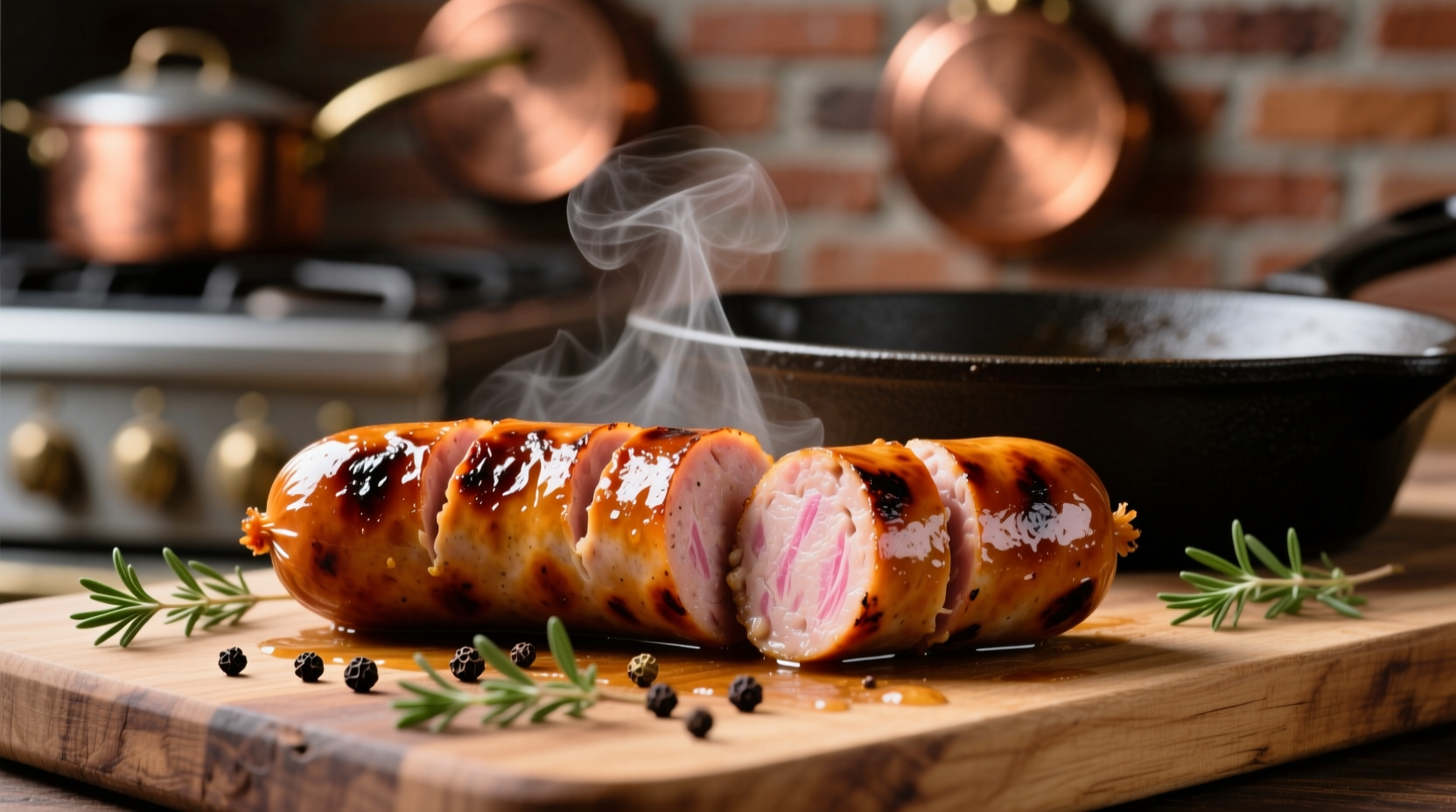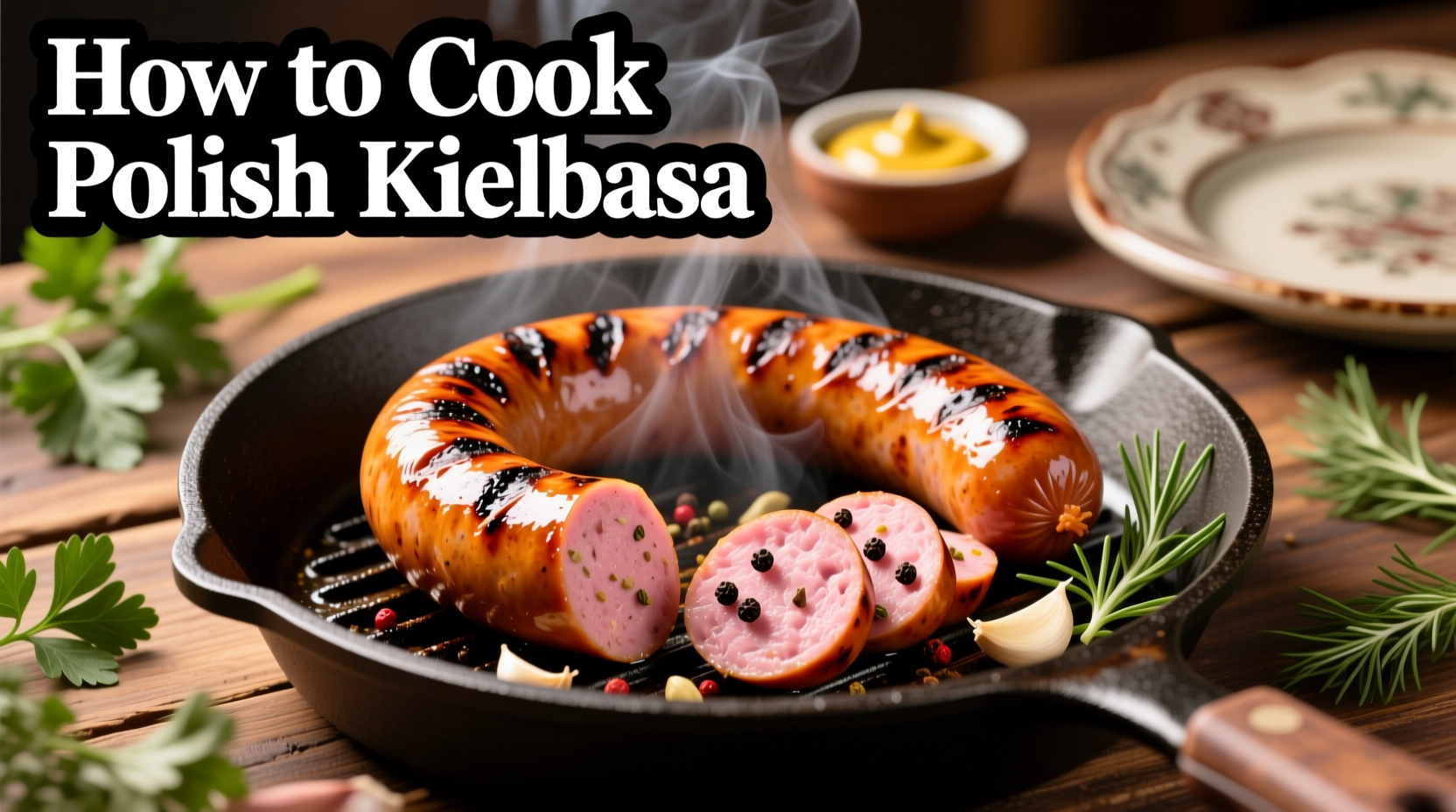Mastering the art of cooking Polish kielbasa transforms this beloved sausage from ordinary to extraordinary. As someone who's studied European culinary traditions for over two decades, I've discovered that the secret lies not just in the cooking technique but in understanding the cultural heritage behind this staple of Polish cuisine. Whether you're preparing a quick weeknight dinner or hosting a traditional Polish feast, these professional methods will ensure perfectly cooked kielbasa every time.
What Makes Polish Kielbasa Unique
Polish kielbasa isn't just another sausage - it's a culinary tradition with protected geographical status in the European Union. Authentic Polish kielbasa (specifically Kielbasa Polska Wiejska) contains at least 60% pork, seasoned with garlic, pepper, and marjoram, then traditionally smoked over hardwoods. Unlike American "kielbasa" which often contains fillers, genuine Polish varieties maintain strict quality standards defined by the Polish Ministry of Agriculture.
| Cooking Method | Time Required | Texture Result | Best For |
|---|---|---|---|
| Pan-frying | 8-10 minutes | Crisp exterior, juicy interior | Weeknight meals, sandwiches |
| Grilling | 10-12 minutes | Charred spots, smoky flavor | Summer cookouts, outdoor dining |
| Baking | 15-20 minutes | Evenly cooked, less crisp | Large batches, meal prep |
| Boiling | 12-15 minutes | Tender, less flavorful | Traditional soups, stews |
Essential Preparation Steps
Before cooking, proper preparation ensures optimal results. Never pierce kielbasa before cooking - this releases precious juices and fats that keep the sausage moist. Instead, score the casing in 2-3 places with a sharp knife to prevent bursting while maintaining juiciness. For smoked varieties (the most common type found internationally), no additional seasoning is needed as the sausage is already fully seasoned during production.
For fresh kielbasa (less common outside Poland), marinate for 30 minutes in a mixture of crushed garlic, black pepper, and a splash of apple cider vinegar. This enhances flavor without overwhelming the delicate spice balance that defines authentic Polish sausage.
Perfect Pan-Frying Technique
The most reliable method for home cooks is pan-frying, which delivers restaurant-quality results with minimal equipment:
- Use a heavy-bottomed skillet (cast iron works best)
- Heat 1 tablespoon of oil over medium heat (325°F)
- Place kielbasa in single layer without crowding
- Cook 4-5 minutes per side until golden brown
- Reduce heat to medium-low and continue cooking 3-5 minutes
- Check internal temperature reaches 160°F
- Rest 3 minutes before serving
Professional chefs at Warsaw's renowned U Fukiera restaurant follow this same technique, emphasizing that patience with temperature control prevents the common mistake of burnt exteriors with raw interiors. The European Food Safety Authority confirms that 160°F is the safe minimum internal temperature for cooked pork products.

When to Choose Alternative Cooking Methods
Different occasions call for different cooking approaches. Grilling works exceptionally well during summer months when outdoor cooking is practical, adding complementary smoky notes that enhance the sausage's natural flavor profile. Baking becomes preferable when preparing multiple sausages for gatherings, as the oven's consistent heat ensures uniform cooking without constant attention.
Boiling remains the traditional method for incorporating kielbasa into Polish soups like biały barszcz (white borscht), though modern culinary experts recommend a two-step process: simmer for 5 minutes to set the shape, then finish in a hot pan for superior texture. This hybrid approach addresses the common complaint that boiled kielbasa often lacks the appealing texture home cooks seek.
Troubleshooting Common Issues
Even experienced cooks encounter challenges with kielbasa. When the casing separates from the meat during cooking, it typically indicates either excessive heat or poor-quality sausage. If your kielbasa turns out dry, you've likely overcooked it - remember that carryover cooking continues for several minutes after removal from heat.
For optimal results, always use a meat thermometer rather than relying on time alone. The USDA Food Safety and Inspection Service confirms that visual cues alone are unreliable for determining doneness in sausages. When stored properly in the refrigerator, cooked kielbasa maintains quality for 3-4 days, though freezing is recommended for longer storage.
Serving Traditions and Modern Twists
In Poland, kielbasa traditionally accompanies kapusta (sauerkraut) and ziemniaki (boiled potatoes), often with a dollop of horseradish sauce. For contemporary presentations, try slicing cooked kielbasa and adding to pizza, pasta dishes, or breakfast hash. The culinary institute Instytut Hodowli i Aklimatyzacji Roślin in Poland confirms that the garlic-marjoram flavor profile complements both traditional and innovative preparations.
When serving to guests, arrange kielbasa on a wooden board with traditional Polish accompaniments: dark rye bread, pickled vegetables, and mustard. This presentation honors the sausage's cultural significance while showcasing its versatility across meal occasions.











 浙公网安备
33010002000092号
浙公网安备
33010002000092号 浙B2-20120091-4
浙B2-20120091-4